PBS
Pbs: Building Big: Skyscrapers
Information about the basics of skyscrapers, with profiles of nine big-building wonders. Extras include a loads lab, which illustrates how and why skyscrapers stand up and keep standing up, and interviews with builders, engineers, and...
PBS
Pbs Learning Media: The Skyscraper Challenge
In this interactive activity from the Web site developed for the PBS series "Building Big," investigate hypothetical structural emergencies and figure out how to repair them.
TeachEngineering
Teach Engineering: Skyscrapers: Engineering Up!
Skyscrapers are one of the most glorified products of Civil Engineering and contain an interesting history of progress and development. In this lesson plan, the students will learn about the history of the world's tallest free standing...
TeachEngineering
Teach Engineering: Building Towards the Future
This curricular unit introduces students to basic Civil Engineering concepts in an exciting and interactive manner. Bridges and skyscrapers, the two most visible products of Civil Engineers, will be discussed in depth. Students will have...
Museum of Modern Art
Mo Ma: Tall Buildings
Students will love to play around in this site! As soon as you click on Enter, the site takes control of your screen with an imposing array of tall building shadows. Some of the buildings have been built, some are under consideration....
Scientific American
Scientific American: Earthquake Proof Engineering for Skyscrapers
Students construct a shake table, then build towers of different heights using Lego blocks, and test their stability on this platform. Next, they test towers with different sized bases, and towers made using different materials.
TeachEngineering
Teach Engineering: Natural Frequency and Buildings
Students learn about frequency and period, particularly natural frequency using springs. They learn that the natural frequency of a system depends on two things: the stiffness and mass of the system. Students see how the natural...
New York Times
New York Times: How the Towers Stood and Fell
A multimedia graphic explains how certain structural elements of the World Trade Center helped to delay its collapse when it was attacked on September 11, 2001, whereas other elements probably sped up the towers' fall.
TeachEngineering
Teach Engineering: Strong as the Weakest Link
To introduce the two types of stress that materials undergo - compression and tension - students examine compressive and tensile forces and learn about bridges and skyscrapers. They construct their own building structure using...
PBS
Pbs Building Big: The Labs
An interactive series of labs describing some basic principles of Physics. The labs demonstrate different basic concepts of physics used in building and creating large structures such as bridges, domes, skyscrapers, dams, and tunnels.
PBS
Pbs: American Experience: The Center of the World: Teacher's Guide
Students will have an opportunity to create memorials at the World Trade Center site to commemorate the September 11th attacks. Come and check it out.
TeachEngineering
Teach Engineering: Newspaper Tower
Students will be challenged to design and construct a tower out of newspaper. They will have limited supplies including newspaper, tape, and scissors since engineers are often restricted by economic reasons as to how much material they...
PBS
Pbs: Building Big Empire States Building
Quick facts about one of the world's tallest buildings.
Curated OER
Science Kids: Science Images: International Commerce Centre, Hong Kong
The International Commerce Centre is a huge skyscraper in Hong Kong. One of the tallest buildings in the world, it stands at 483 metres in height (1584 feet). It features 118 floors and can be seen nearing completion in this photo. For...
Curated OER
Science Kids: Science Images: Jin Mao Tower, Shanghai, China
This is a photo of the Jin Mao Tower in Shanghai, China. The massive skyscraper is one of the tallest buildings in the world, featuring 88 floors. Opened in 1998, it stands 421 metres in height (1380 feet). The image is taken from the...
Curated OER
Science Kids: Science Images: Nanjing Greenland Financial Center, China
Located in Nanjing, China, the Nanjing Greenland Financial Center is one of the tallest buildings in the world. The towering skyscraper reaches 450 metres (1476 feet) in the air and contains 89 floors. For more information on amazing...
Curated OER
Science Kids: Science Images: Shanghai World Financial Center, China
The Shanghai World Financial Center in China is one of the tallest buildings in the world. Built in 2008, it reaches 492 metres (1614 feet) in height and contains 101 floors. The skyscraper is used for a number of uses, from shopping...
Curated OER
Science Kids: Science Images: The Gherkin, 30 St Mary Axe, Swiss Re Building
This is a photo of 30 St Mary Axe, which is also known as the Swiss Re Building or simply the Gherkin. This unique skyscraper is found in the main financial district of London, England. Standing 180 metres (591 ft) tall, the Gherkin...
Curated OER
Science Kids: Science Images: Trump International Hotel and Tower, Chicago, Usa
The Trump International Hotel and Tower is one of the tallest buildings in the world. This skyscraper located in Chicago, USA, reaches an impressive height of 423 metres (1389 feet) and features 96 floors. In an interesting side fact,...
Science Buddies
Science Buddies: Building the Tallest Tower
Skyscrapers are impressive structures. What does it take to design a building so tall? Engineers use strong materials and innovative design to push the limits of gravity. In this experiment you will use LEGO components, rubber balls, and...
PBS
Pbs: Building Big: Wonders of the World Databank: Sears [Willis] Tower
Photographs, vital statistics, and fast facts about the Sears Tower (renamed the Willis Tower in 2009).

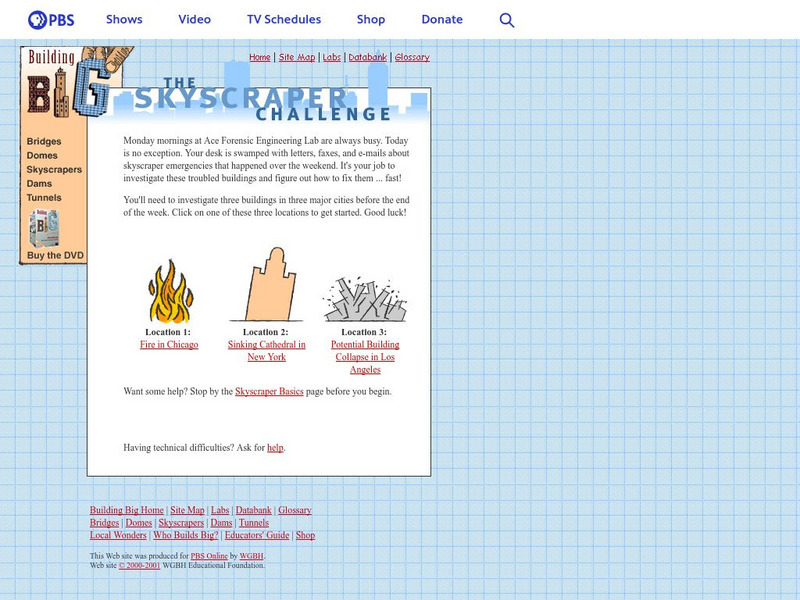
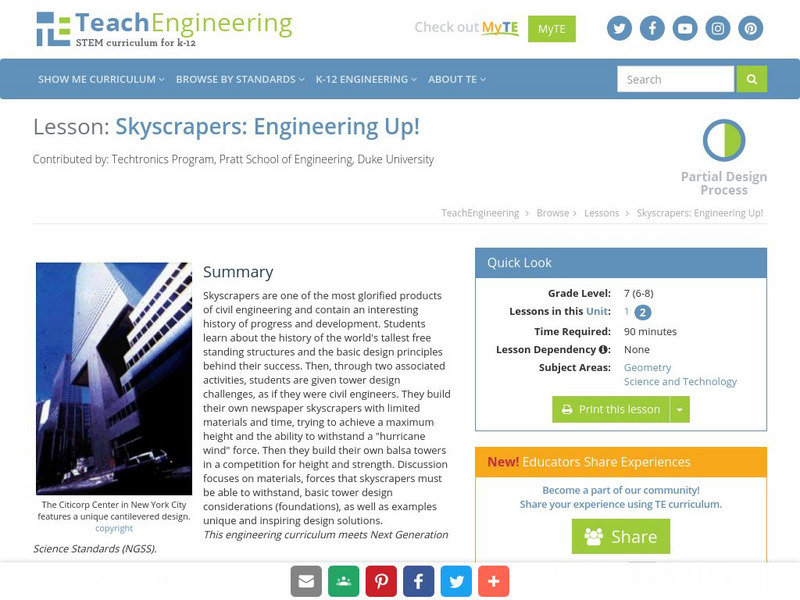
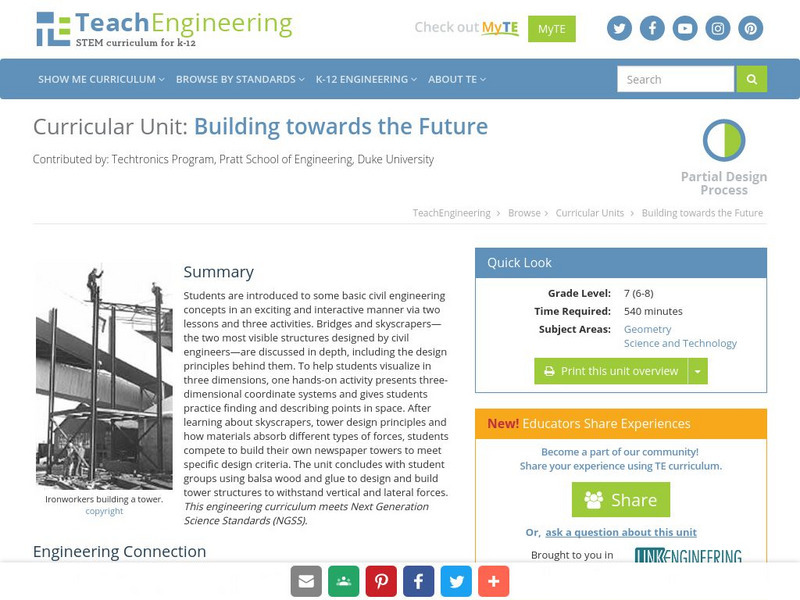



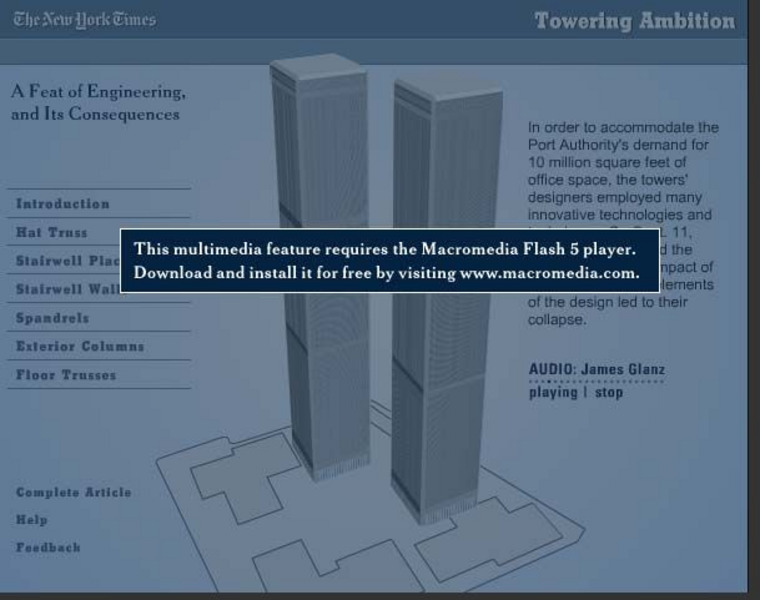




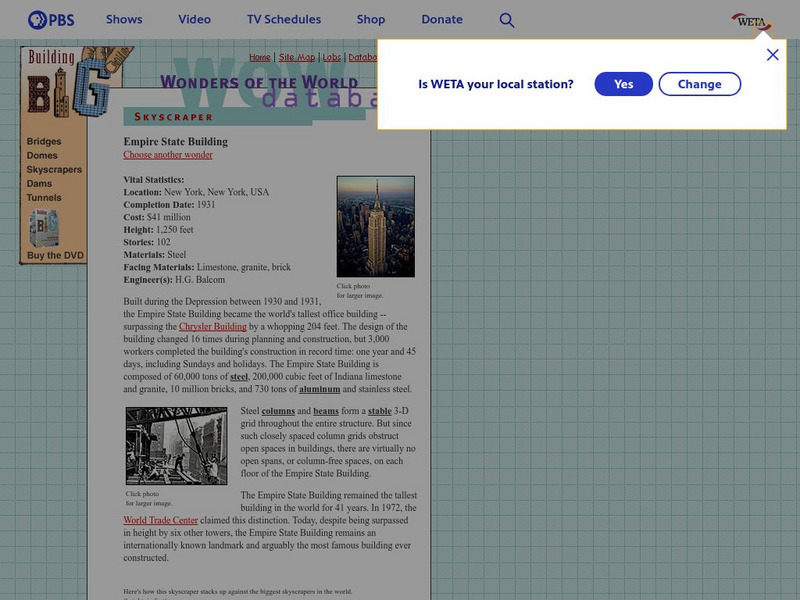


![Pbs: Building Big: Wonders of the World Databank: Sears [Willis] Tower Handout Pbs: Building Big: Wonders of the World Databank: Sears [Willis] Tower Handout](https://content.lessonplanet.com/knovation/original/79927-c806a34318d097c3a5050b11abb76383.jpg?1661447772)